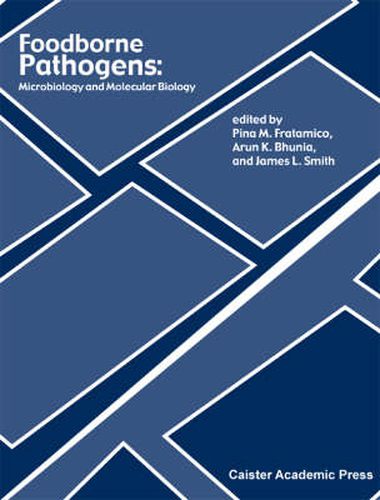Readings Newsletter
Become a Readings Member to make your shopping experience even easier.
Sign in or sign up for free!
You’re not far away from qualifying for FREE standard shipping within Australia
You’ve qualified for FREE standard shipping within Australia
The cart is loading…






Foodborne pathogens continue to cause major public health problems worldwide. These organisms are the leading causes of illness and death in less developed countries, killing approximately 1.8 million people annually. In developed countries, foodborne pathogens are responsible for millions of cases of infectious gastrointestinal diseases each year, costing billions of dollars in medical care and lost productivity. In addition, new foodborne diseases are likely to emerge driven by factors such as pathogen evolution, changes in agricultural and food manufacturing practices, and changes to the human host status. A third problem is that there are growing concerns that terrorists could use pathogens to contaminate food and water supplies in attempts to incapacitate thousands of people and disrupt economic growth. Fuelled by these concerns, research into the genomics, molecular biology, and microbiology of the most important foodborne pathogens has escalated to unprecedented levels in recent years. Foodborne Pathogens represents a cutting edge summary of all the latest advances, providing a coherent picture of the current status of research. Opening chapters tackle topics such as pathogen detection (molecular, biosensor), molecular typing, viable but non-culturable organisms, predictive modeling, and stress responses. The next section covers groups of organisms: enteric viruses, protozoan parasites, and mycotoxins. This is followed by chapters on specific bacteria: Yersinia enterocolitica, Vibrio spp., Staphylococcus aureus, Campylobacter Infections, Listeria monocytogenes, Salmonella spp., Shigella spp., Escherichia coli, Clostridium botulinum, Clostridium perfringens and Bacillus cereus. The final chapters provide a fascinating review of the ability of pathogens to contaminate a food supply and provide an overview of emerging Foodborne pathogens. The book is essential reading for microbiologists, food scientists, and particularly anyone involved in food safety.
$9.00 standard shipping within Australia
FREE standard shipping within Australia for orders over $100.00
Express & International shipping calculated at checkout
Foodborne pathogens continue to cause major public health problems worldwide. These organisms are the leading causes of illness and death in less developed countries, killing approximately 1.8 million people annually. In developed countries, foodborne pathogens are responsible for millions of cases of infectious gastrointestinal diseases each year, costing billions of dollars in medical care and lost productivity. In addition, new foodborne diseases are likely to emerge driven by factors such as pathogen evolution, changes in agricultural and food manufacturing practices, and changes to the human host status. A third problem is that there are growing concerns that terrorists could use pathogens to contaminate food and water supplies in attempts to incapacitate thousands of people and disrupt economic growth. Fuelled by these concerns, research into the genomics, molecular biology, and microbiology of the most important foodborne pathogens has escalated to unprecedented levels in recent years. Foodborne Pathogens represents a cutting edge summary of all the latest advances, providing a coherent picture of the current status of research. Opening chapters tackle topics such as pathogen detection (molecular, biosensor), molecular typing, viable but non-culturable organisms, predictive modeling, and stress responses. The next section covers groups of organisms: enteric viruses, protozoan parasites, and mycotoxins. This is followed by chapters on specific bacteria: Yersinia enterocolitica, Vibrio spp., Staphylococcus aureus, Campylobacter Infections, Listeria monocytogenes, Salmonella spp., Shigella spp., Escherichia coli, Clostridium botulinum, Clostridium perfringens and Bacillus cereus. The final chapters provide a fascinating review of the ability of pathogens to contaminate a food supply and provide an overview of emerging Foodborne pathogens. The book is essential reading for microbiologists, food scientists, and particularly anyone involved in food safety.